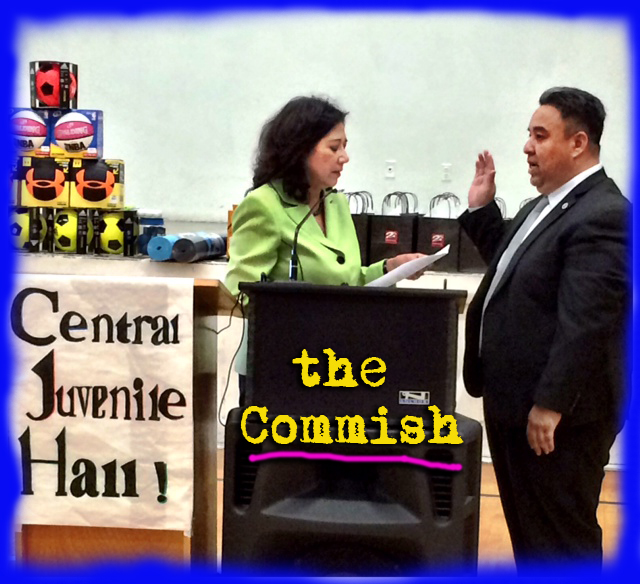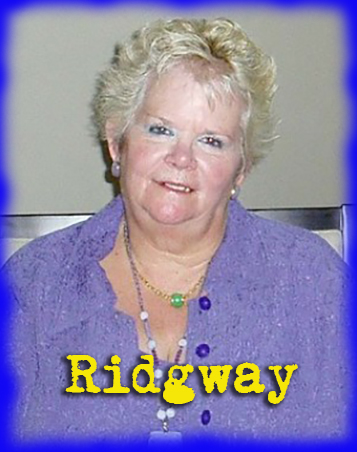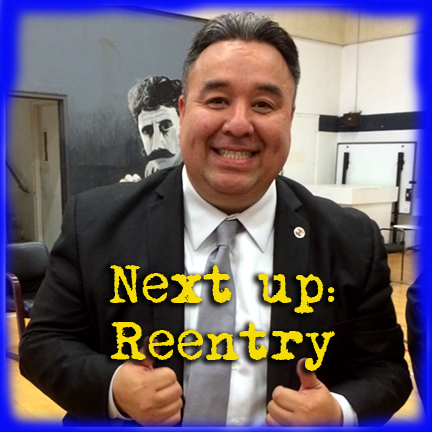
When Sal Martinez, whose full name is Azael “Sal” Martinez Sonoquí, was sworn in on August 9, 2015, for his second term as a Los Angeles County Probation Commissioner, he insisted on having the ceremony take place inside LA’s Central Juvenile Hall, where he gave several dozen of the hall’s teenage residents front row seats at the well-attended festivities.
If some of the dignitaries, who were also in attendance, thought the place an unusual environment for a county official to give a party, Martinez, 45—whom personal friends often refer to as The Commish—soon disabused them of that notion. It perfectly symbolized the work he intended to do in his next round as commissioner and it was, after all, a location he knew intimately, he said.
The first time Martinez entered one of the county’s juvenile lock-ups was in 1984 when he was 14 years old. He’d been arrested for GTA—grand theft auto. He and a friend jacked somebody’s tricked out Ford truck right out of the owner’s driveway. They did so at the request of a chop shop owner who recruited young Martinez and his buddy to steal the vehicle for him. The chop shop crook even helpfully pointed out the exact truck he wanted. More accurately, it was the parts of the truck that he ardently desired.
However, while the underage thieves did manage to steal the truck, they did not deliver it.
“The police got us first,” Martinez told me. So the Ford owner got his truck back, and Martinez went to juvenile hall.
Martinez passed through the hall, as local kids then called LA County’s main short term juvenile facility, four more times. His last residence began in mid October, 1987, when he was seventeen. On that occasion, he’d just gotten out of Los Angeles County-USC hospital, where he’d been taken after he had been shot in the neck by a member of the Los Angeles Police Department. (In total, Martinez has been shot twice, and stabbed four times.) It was a gunshot that should have killed the teenager, but instead the wound was a through-and-through. The bullet entered on the right side of his neck, just under his ear, and emerged out the right back side of his neck, less than an inch from his spine. It’s trajectory just missing his carotid.
By that time Martinez had graduated from occasional lawbreaking to active gang membership and serious drug dealing. Interestingly, his drug dealing boss wasn’t an older gangster higher up on the gang food chain. His boss was his mother. In her daytime hours, she had a legal job sewing piece goods for Levi Strauss, Guess, and a few other downtown LA clothing manufacturers. With the rest of her time, she ran a wholesale rock and powder cocaine distribution business that supplied drugs to many of Boyle Heights’ most notorious street gangs. (His father, a Pentecostal minister, had long ago left the family.)
To juggle the legal and illegal sides of her life, the mom had all three of her sons on a well-organized schedule that she noted carefully on a calendar in the family kitchen. On the first week of every month—Sunday night through the following Sunday morning—Martinez’ elder brother made the drug deliveries. The second week was Sal’s. The third week belonged to his younger brother. The last week, the mom delivered the goods.
The day that Martinez was shot, his mother was scheduled to drop off an order of PCP to a woman client. But the woman, who was also supposedly a personal friend, had asked to meet her at State Street public park. It wasn’t Martinez’ week, and he was slated to take his younger brother to the doctor that day, but he would pass right by the park, so he agreed to do his mom a favor with the drug drop.
When he arrived at the designated area of the park, he spotted the woman standing near to her Mustang. But rather than come to meet him, she instead gestured toward him with her hand. A millisecond later, Martinez saw the hoards of cops that seemed to emerge from nowhere and everywhere at once, racing toward him in cars and on foot.
It was, of course, a sting. Martinez ran. As he ran, the drugs scheduled for delivery threatened to fall out of the pockets of his baggy Guess jeans. (His mother brought home Guess seconds for her sons.) Mid-run, he reached a hand toward the falling drugs hoping to secure them, and one of the officers shot him.
Despite his wounds, in less than a day, he was transferred in leg irons and chains, from the jail section of County USC Medical Center, to the infirmary of juvenile hall, where he remained for several weeks. When he’d recovered enough to go to court, he was sentenced to 7-9 months in county custody, and shipped to Camp Mendehall, a juvenile probation facility located in the chaparral-covered hills north of Castaic Lake and South of Lake Hugues. He liked the quiet of the place. As his release date approached in late May of 1988, Martinez became anxious. He didn’t want to go home. His mother had only visited him once in seven months and even then it was under duress. He desperately wanted to be done with his old gang and drug-dealing existence.
But he didn’t know what to do about it.
ENTER MARY RIDGWAY
Martinez met the person whom he credits with both rerouting and saving his life on the second to the last day of his term. That was when a probation officer who was scheduled to have his case after his upcoming release, showed up at camp. She was a formidable-looking, middle-aged blond with a penchant for amethyst-colored dresses, good jewelry, most notably jade, and was famous inside probation as the ne plus ultra of experts when it came to eastside gangs and gang members. Police came to her for insider information, not the reverse. Her name was Mary Ridgway.
At the time, Martinez, a natural leader, had been named camp “mayor.” When Ridgway bustled his direction, she said, with a challenging raise of one eyebrow, that she’d been looking forward to meeting this “mayor” she’d heard so much about. Before she left him, she told him he was not “meant for a life behind bars,” and that he had to come to see her first thing when he got out, but to come near the end of the day, as she would make him her last appointment
At the initial meeting in her office after his release, Ridgway read him the conditions of his probation, then told him she knew where he lived and that she could bust him at any time. Finally, she marched Martinez across the street and got him enrolled in an alternative school run by the Soledad Enrichment Action program.
After that, she never let up on him. In addition to the required weekly check-ins, she took him and other probationers on field trips to museums, movies, to try playing golf, whatever she thought would help. Her encouragement was relentless.
It worked. Martinez never dealt drugs again. Like the rare drunk who can quit cold turkey, Martinez simply walked away. ¡Ya estuvo! Enough was enough. He wanted something better.
His mother tried to talk him out of the straight life. ‘We need you,’ she said. His older brother told him he was a fool. But Martinez was finished. A year into his probation, he went to work for Sears for $5.04 an hour. He was proud of himself for doing it.
“I wanted Mary’s world,” he said.
In the years that followed, he got a good job working for a beverage distribution company, where he’s been for the last two decades. He got married, had kids, learned the joys of parenting, and began working evenings and weekends as a volunteer in the same communities where he’d once dealt drugs.
All the while, he stayed close to his former probation officer whom he regarded as his tough-talking surrogate mom, his mentor, his savior.
When Mary Ridgway died on Feb. 21, 2009, of a fast moving cancer, a devastated Martinez was one of her pall bearers.
Although I’d heard about him for years from Ridgway, I met Martinez for the first time at Mary’s funeral where we talked urgently for more than an hour in the rain.
THE COMMISH BECOMES THE COMMISH
Even after her death, Ridgway’s impact on Martinez’ life continued. It was due to her influence, albeit through a series of quirky, back-door circumstances, that the former gangster/drug dealer—who, so to speak, broke good—was selected for his first term as an LA County Probation Commissioner.
Martinez’ road to the position commenced when he began working to find a way to appropriately honor the woman who meant so much to him—and to many other former gang members and at risk young men and woman.
(“I’d be dead if it weren’t for Ridgway,” was the common refrain among former homeboys and homegirls after news of the legendary PO and gang expert’s passing spread.)
With honoring her in mind, when Martinez heard that there were plans afoot to rename the East Los Angeles Probation Center after some politically-connected person or other, he contacted the office of then-LA County Supervisor Gloria Molina, and suggested that Ridgway was the ideal person for whom the place could be renamed. At first, exactly no one in a position of power warmed to the idea. Ridgway was, for one thing, a white lady and this was, after all, East LA. Even worse, nobody outside of law enforcement—and…well…gangsters and former gangsters—had ever heard of her. But Martinez was determined. Make that: unstoppable.
Three years later, in June 2011, the Mary Ridgway East Los Angeles Probation Office was officially christened, with plenty of county officials on hand to celebrate and own the decision to recognize this women whose name they had only recently learned.
When a few months later, a spot opened up on the probation commission, Molina and her staff thought of Martinez. They’d been impressed by how he worked the county’s political system with near miraculous skill when he—and the others he dragooned into helping him—-got the probation office named for Mary Ridgway.
They asked if he was interested in the commission appointment. He was interested, he said.
On September 6, 2011 the Board of Supervisors voted to approve Sal Martinez to be a member of the Los Angeles County Probation Commission. The 15 commissioners, who are selected by the supes (each supervisor chooses three), serve terms of four years in duration.
The commission has no real power, except in an advisory capacity. It’s members are mandated to “assist all Los Angeles County Departments in ensuring that the Los Angeles County juvenile justice system is humane and effective.”
Martinez took the commission’s stated purpose seriously and literally, showing up unannounced at juvenile facilities to see how things looked when no one was expecting company, and how kids were being treated when the staff believed there were no outsiders present to observe. He was frequently not thrilled by what he found, and wrote strongly-worded reports about his observations. The reports got people’s attention.
As a consequence, when his four-year term was up, plenty of juvenile advocates went to bat for his reappointment.
And so it was that Martinez was sworn in for his second four-year term, this time as Supervisor Hilda Solis’ new appointee.
In attendance at his swearing in were such people as LA City Council Member, David Ryu, powerful LA County labor leader, Maria Elena Durazo, a pile of juvenile service providers, and a number of higher-ups from the probation department, among others—along with, of course, the kids from juvenile hall, who were, after all, the point of the whole exercise.
Sal is my hero,” said Solis just before she swore him in, “and I don’t have that many heroes….”
When Martinez himself spoke, he talked about Ridgway’s affect on him, addressing his remarks to the young, nervous-looking hall residents who stared intently back at him, like jittery deer. “I believe I got a second chance,” he said, “and that’s why I’m here today.” He told the kids he wanted to make sure they also got the help that they needed to stay out of places like juvenile hall. “That’s why supervisor Solis appointed me.”
Last term Martinez focused on the conditions in the juvenile facilities, a task he feels is far from finished. This term, however, he said he wants to also focus on juvenile reentry (a topic that is a story in itself).
We will be checking in regularly to see how Commish Martinez is doing with this newest, most worthy quest..



Bravo for this young man. His story speaks for itself.
Great story on the Comish — love his dedication to the well-being of the youth. I also knew Mary Ridgeway and many of the young men who are alive and well today because of her sincere commitment to human life and justice.
All true but please spell Ridgway without the “e”.
Guess we’ve run out of candidates….
Fantastic story of a life NOT lost even with all the odds against it, but I teared up as soon as Mary Ridgway came into the story knowing that she wouldn’t be around to see ONE of her success stories become the inspiration to others.
EDITOR’S NOTE:
Eeeeek! Edwardo, thank you so much for the heads up. My autocorrect kept switching them whenever I’d make changes to the text that contained her name. I thought I’d caught most of them, but then I made some more edits later this morning and….well….you saw the result. I just corrected 7 more Ridgeways-with-an-E.
Feh. Sorry, Edwardo. (And sorry, Mary.)
(I have a brand new computer and it hadn’t “learned” the spelling of Mary’s last name. It has now.)
Thanks again.
C.
[…] County Probation Commissioner Azael “Sal” Martinez, a former gang member who also made several trips through the county juvenile justice system when he was younger, agreed […]